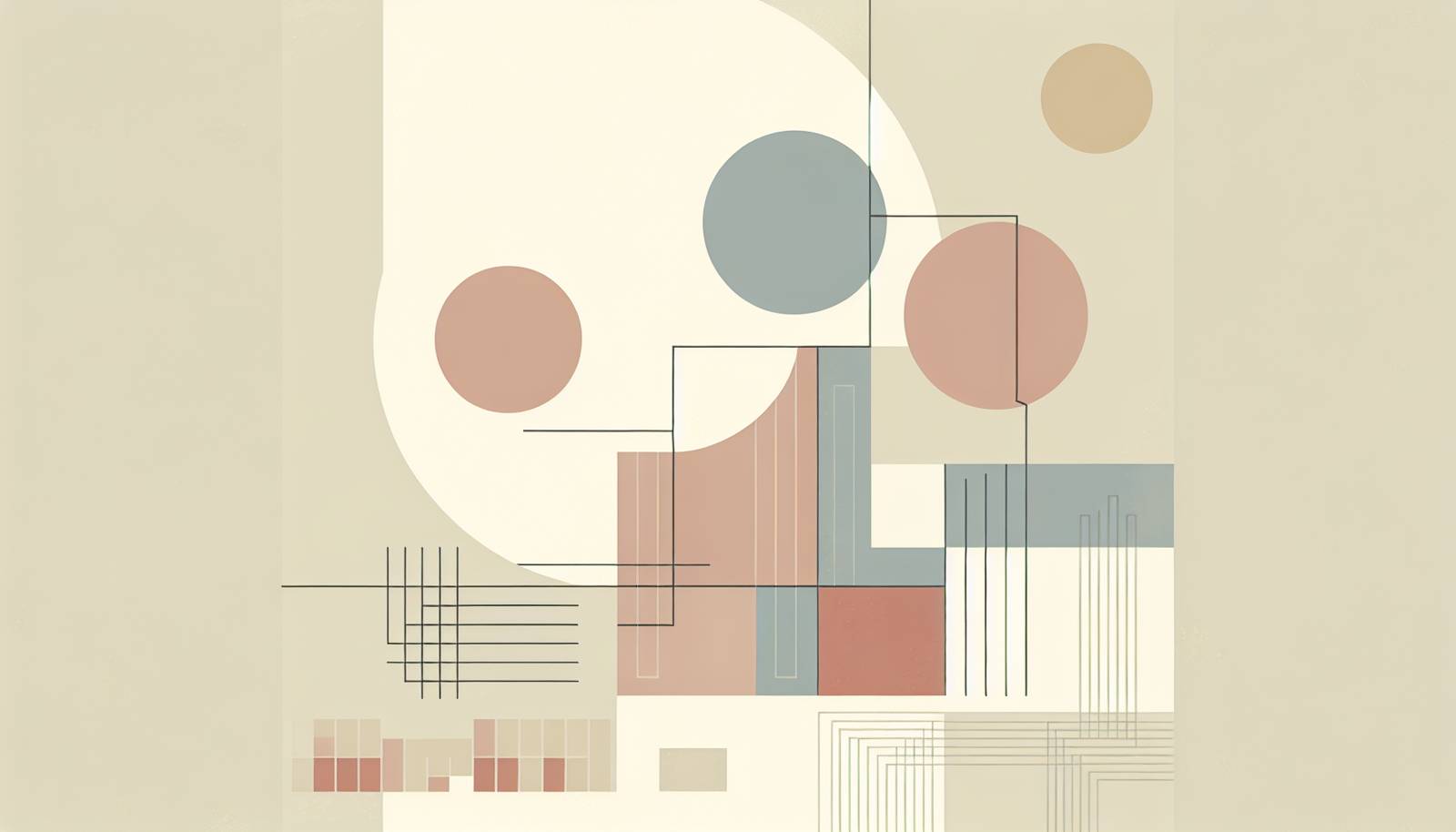
FAQ About The Influence of Bauhaus on Contemporary Craftsmanship

What is the Bauhaus movement?
The Bauhaus was a revolutionary school of art, architecture, and design founded in 1919 by Walter Gropius in Weimar, Germany. It aimed to unify arts, crafts, and industrial design and is known for its unique approach to these disciplines, emphasizing the connection between art and practical design. Bauhaus is renowned for its influence on modernism, recognized by its minimalist and functional style.

How did Bauhaus influence modern design?
The Bauhaus movement fundamentally reshaped modern design by promoting the idea that function should dictate form. It encouraged the use of clean lines, simplified forms, and a lack of ornamentation, which have become characteristic of modern architecture and design. The emphasis on mass production and materials suited to industrial processes also paved the way for modern manufacturing and consumer goods.

What are some key principles of Bauhaus design?
Key principles of Bauhaus design include functionality, simplicity, and the integration of technology and craftsmanship. Bauhaus designers aimed to create objects that were both beautiful and practical, using materials like steel, glass, and concrete. The focus was on reducing objects to their essential components, with a particular emphasis on function over decoration.

Who were prominent figures in the Bauhaus movement?
Prominent figures in the Bauhaus movement include Walter Gropius, the founder, and directors Hannes Meyer and Ludwig Mies van der Rohe. Influential artists and designers such as Paul Klee, Wassily Kandinsky, László Moholy-Nagy, Marcel Breuer, and Oskar Schlemmer also played crucial roles in teaching and developing Bauhaus philosophies.

How did Bauhaus principles influence contemporary craftsmanship?
Bauhaus principles influenced contemporary craftsmanship by advocating for the integration of art and industry. This approach laid the groundwork for modernist design movements and encouraged craftspeople to focus on functionality and simplicity. Contemporary craftsmen often draw inspiration from Bauhaus by adopting minimalist aesthetics and focusing on the functionality of their creations.

What role did technology play in Bauhaus design?
Technology played a crucial role in Bauhaus design, as the movement sought to harmonize artistic endeavors with industrial advancements. Bauhaus artists embraced new materials and techniques, aiming to make products accessible through mass production. The use of modern tools and processes was integral to achieving simplicity and functionality in their designs.

Where can I see examples of Bauhaus influence today?
Examples of Bauhaus influence can be seen in contemporary architecture, furniture, graphic design, and product design. Many modern buildings reflect Bauhaus minimalist aesthetics, and everyday products like chairs, lamps, and typefaces show the movement's impact. Cities like Berlin, Tel Aviv, and Chicago have buildings and museums dedicated to Bauhaus exhibitions and legacies.

What was the main educational philosophy of the Bauhaus school?
The main educational philosophy of the Bauhaus school was to break down the barriers between fine arts and applied arts. Students were encouraged to learn through hands-on experience, experimentation, and collaboration across various disciplines. The interdisciplinary approach taught them to consider design as a holistic process that incorporates art, technology, and craftsmanship.

How did Bauhaus impact interior design?
Bauhaus impacted interior design by introducing concepts like open floor plans, functional furniture, and the use of industrial materials like metal and glass. These elements emphasized simplicity and space efficiency, significantly influencing modern minimalist interior design. The focus on functional, aesthetically pleasing interiors remains central to contemporary interior design practices.

Can Bauhaus design principles be applied to digital design?
Yes, Bauhaus design principles can be applied to digital design, particularly through the emphasis on simplicity, usability, and function. These principles help guide the creation of user-friendly interfaces and digital products that are both aesthetically pleasing and functional. The clean lines and minimalism characteristic of Bauhaus are evident in modern web and app design, making them intuitive and efficient.

How does Bauhaus influence graphic design today?
Bauhaus influences graphic design today by advocating for clarity and simplicity in visual communication. Designers use basic geometric shapes, primary colors, and sans-serif typography reminiscent of Bauhaus tenets. This approach emphasizes legibility and aesthetic appeal, which are crucial components of contemporary graphic design strategies.

What materials were commonly used in Bauhaus designs?
Bauhaus designers commonly used materials that were conducive to mass production, such as steel, glass, plywood, and concrete. These materials facilitated the creation of functional, durable, and aesthetically pleasing designs suitable for modern living. The emphasis on industrial materials was integral to the Bauhaus ethos of harmonizing craftsmanship with technology.

Did Bauhaus influence sustainable design practices?
Bauhaus' emphasis on functionality and resource efficiency can be seen as a precursor to modern sustainable design practices. By advocating for the use of long-lasting, readily available materials and promoting minimalist aesthetics, Bauhaus laid the groundwork for designing with sustainability in mind. This influence continues as designers focus on reducing waste and utilizing eco-friendly materials.

How did World War II affect the Bauhaus movement?
World War II had a significant impact on the Bauhaus movement, leading to the closure of the Bauhaus school in 1933 under Nazi regime pressure. However, this dispersion enabled Bauhaus ideals to spread worldwide as former members emigrated, notably to North America, where they held influential academic and professional positions that helped perpetuate and adapt Bauhaus principles globally.

What is the legacy of the Bauhaus movement?
The legacy of the Bauhaus movement is evident in various fields such as architecture, industrial design, graphics, and education. Its principles of functionality, simplicity, and integration of art and technology continue to influence contemporary design processes and creative education worldwide. Bauhaus' innovative methods and minimalistic aesthetics remain a touchstone for modern and post-modern design endeavors.

Is there a difference between Bauhaus and modernist design?
While Bauhaus is a subset of modernist design, known for its direct influence on modern architecture and design practices, it distinguishes itself by its emphasis on combining functions with artistic expression. Modernist design encompasses a broader set of styles and philosophies, whereas Bauhaus specifically focuses on the integration of form and function with a minimalist aesthetic.

How did Bauhaus influence urban planning?
Bauhaus influenced urban planning by promoting principles of functionalism and the efficient use of space. The Bauhaus focus on simplicity and the practical use of materials inspired urban designs that emphasize utility and accessible public spaces. These concepts have contributed to modern urban development, which values sustainable and people-centered environments.

What impact did Bauhaus have on the furniture industry?
Bauhaus had a profound impact on the furniture industry by introducing minimalist and functional designs that could be mass-produced. Designers like Marcel Breuer pioneered new furniture trends using tubular steel, exemplifying Bauhaus ideals of utility and simplicity. These innovations have influenced countless modern furniture styles and design philosophies.

Why did the Bauhaus school close in 1933?
The Bauhaus school closed in 1933 due to increasing pressure from the Nazi regime, which viewed its modernist and avant-garde teachings as contrary to their ideological and aesthetic values. Despite its closure, the faculty and students continued to spread Bauhaus principles worldwide, significantly impacting global design standards and educational practices.

What is the significance of color in Bauhaus design?
Color played a significant role in Bauhaus design, serving both functional and aesthetic purposes. Bauhaus artists like Kandinsky explored the psychological effects of colors in design, using primary hues to enhance clarity and impact. This analytical approach to color continues to influence modern design, where color is used strategically to guide user experience and communication.
